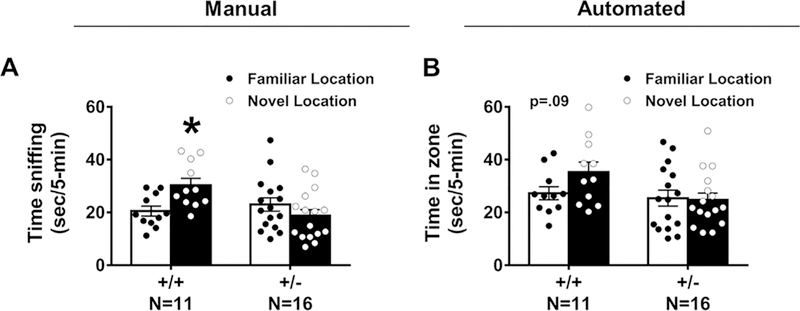Fig. 2.

Snord116 +/− displayed impairments on the object location memory (OLM) task by manual and automated quantification measures. This version of the OLM used the same apparatus that was used for testing NOR and used the same habituation and familiarization procedures. However, the subject was exposed to different objects. Two identical objects were placed 12-cm away from the wall and 18-cm from each other) for a 10-min familiarization session. (A) Snord116 +/− mice do not spend more time sniffing the displaced object in the new location as compared to the object in the original location. Snord116 +/+ littermates spend more time sniffing the displaced object in the new location when compared to familiar location. (B) Automated scoring via Noldus Ethovision 9.0XT illustrated Snord116 +/− mice do not spend more time in the zone defined around the displaced object versus the zone defined around the familiar location, while Snord116 +/+ exhibit this object location memory (p = 0.09) during the 5-min testing phase.
